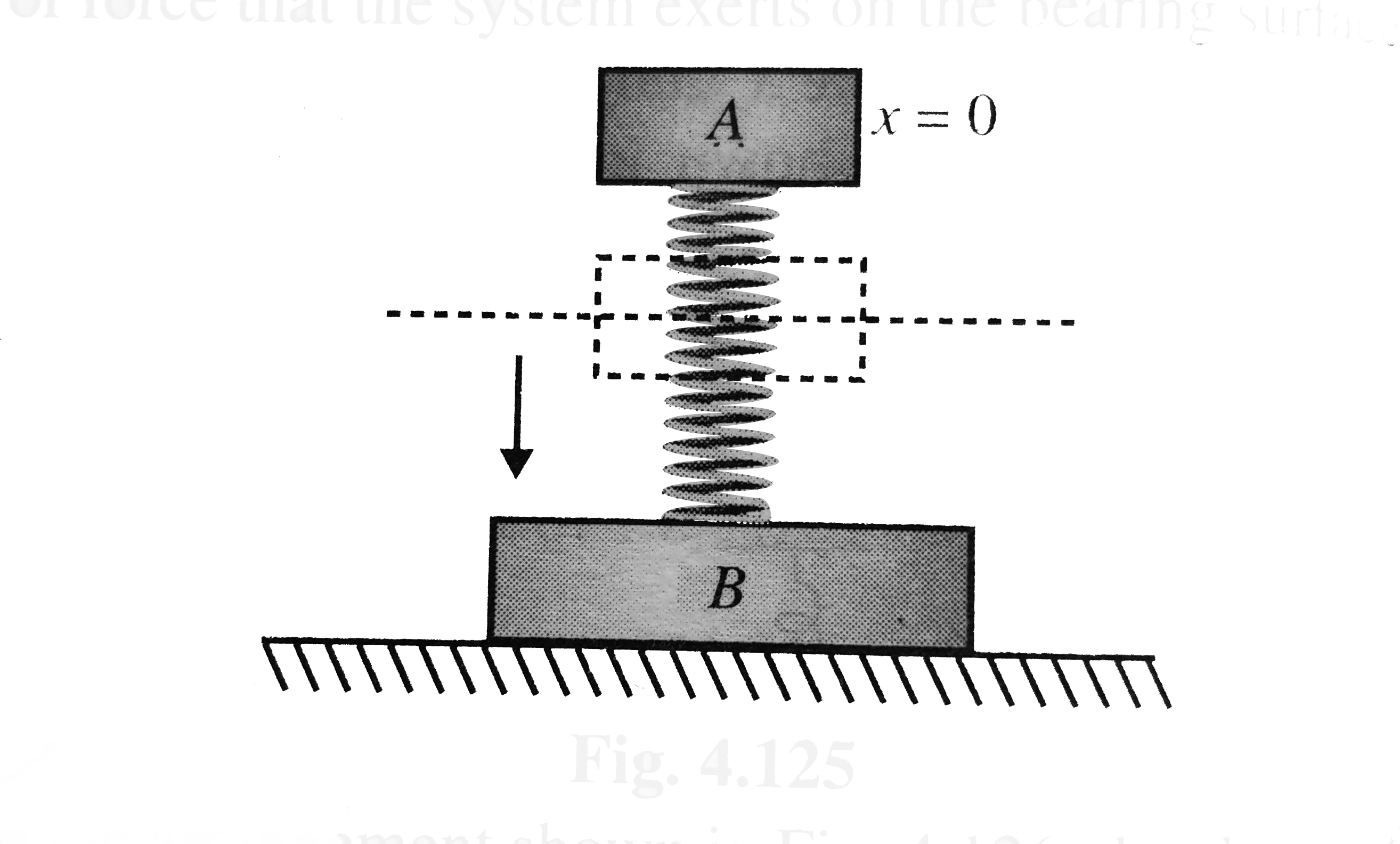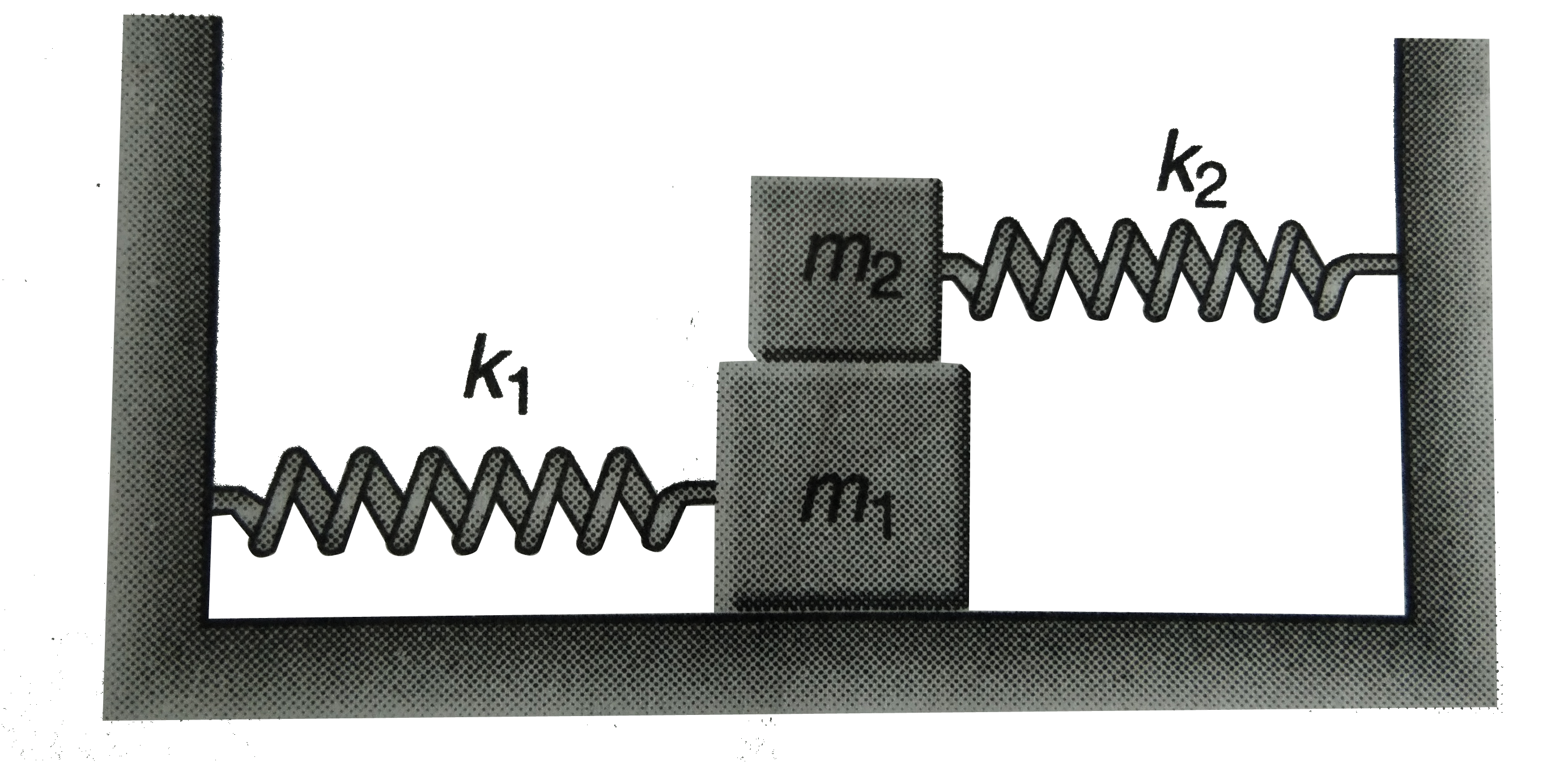A body performs simple harmonic oscillations along the straight line with as the midpoint of . Its kinetic energies at and are each one fourth of its maximum value. If , the distance between and is

A
The correct Answer is:C
A and E are extreme positions and C is the mean position
distance between B and D
Topper's Solved these Questions
- OSCILLATIONSBook:NARAYNAChapter:OSCILLATIONSExercise:EXERCISE - II (C.W)
Explore 27 Videos
- OSCILLATIONSBook:NARAYNAChapter:OSCILLATIONSExercise:EXERCISE - II (H.W)
Explore 19 Videos
- OSCILLATIONSBook:NARAYNAChapter:OSCILLATIONSExercise:EXERCISE - I (C.W)
Explore 63 Videos
- NEWTONS LAWS OF MOTIONBook:NARAYNAChapter:NEWTONS LAWS OF MOTIONExercise:PASSAGE TYPE QUESTION
Explore 6 Videos
- PHYSICAL WORLDBook:NARAYNAChapter:PHYSICAL WORLDExercise:C.U.Q
Explore 10 Videos
Similar Questions
A point performs harmonic oscillations along a straight line with a period T=0.60s and amplitude a=10.0cm. Find the mean velocity of the point averaged over the time interval during which it travels a distance z/2, starting from
(a) the extreme position.
(b) the equilibrium position.
View SolutionFour ships A,B,C and D are at sea in the following relative positions: B is on the straight line segment AC, B is due north of D and D is due west of C. The distance B and D is 2km. ∠BDA=40∘,∠BCD=25∘. What is the distance between A and D. (sin25∘=0.423).
View Solution
Knowledge Check
A body performs SHM along the straight line MNOPQ. Its kinetic energy at N and at P is half of its peak value of O. If the time period is T, then the time taken to travel from N to P directly along MOP is
 AT2BT4CT2√2DT4√2
AT2BT4CT2√2DT4√2A particle oscillates simple harmonically along a straight line with period 8 seconds and amplitude 8√2m. It starts from the mean position, then the ratio of the distances travelled by it in the second second and first second of its motion is
A√2B2C(√2−1)D√3A particle performs SHM of amplitude A along a straight line .When it is at a distance of √32A from mean position its kinetic energy gets increased by an amount of 12mω2A2 due to an impulsive force. Then its new amplitude becomes
A√52AB√32AC√2AD2√5A
A particle of mass 10 g is describing SHM along a straight line with a period of 2 s and amplitude of 10 cm. what is the kinetic energy when it is (i) 2 cm (ii) 5 cm, from its equilibrium positio ? How do you account for the difference between its two values.?
View SolutionThe maximum seperation between two particles executing simple harmonic motion of the equal amplitude and same frequency along the same straight line and about the same mean position, is √3 times the amplitude of oscillation. IF the phase difference between them is ϕ, determine 2π/ϕ.
View SolutionA body A mass m1=1kg and body B of mass m2=4.1kg. The body A perform free vertical harmonic oscillations with the amplitude 1.6cm and frequency 25Hz. Neglecting the mass of the spring , find the maximum and m inimum value of force that the system exerts on the hearing surface.

View SolutionIn the shown arrangement, both the spring are in their natural lengths. The coefficient of friction between m2 and m1 is μ. There is no friction between m1 and the surface. If the blocks are displaced slightly, they together perform simple harmonic motion. Obtain

(a) Frequency of such oscillations.
(b) The condition if the friction force on clock m2 is to act in the direction of its displacement from mean position.
( c) If the condition obtained in (b) is met, what can be maximum of their oscillations ?
View SolutionA particle performs SHM of amplitude A along a straight line .When it is a distance √32A from mean position its kinetic energy gets increase by on amount 12mω2A2 due to an implusive force. Then its new amplitude because
View Solution